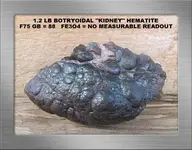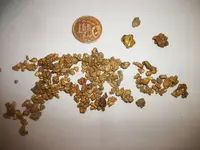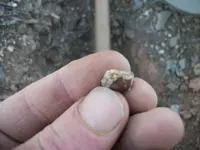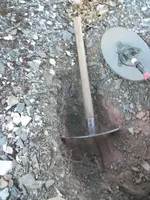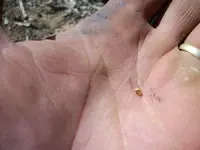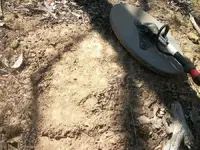Lanny... a very well stated post above... I admire your views and fully agree with everything said above... bravo. Al has the courage of his convictions and principles IMO.

We enjoyed viewing your latest ATX video Al… you’re doing a great job and I hope you will continue with these videos. Although the GPX5K does not interest me, I’m sure others are understandably very much interested in such comparisons.
I’m not at all surprised at the AT Gold detection depth / sens in that ground. My ground here at home is a brown clay-based loam with plenty of magnetite that covers a kitchen magnet stirred briefly into it. With a 10” elliptical concentric on my F75 it produces a GB readout of 85 and Fe3O4 readout of 0.3% Equivalent Magnetite (EM). Now those readouts tend to vary a bit depending on the type and size of coil tested. I consider my ground to be on the high side of moderate… some might consider it highly mineralized… but in any case it is nothing extreme by any stretch. The point is that my mid-frequency VLF units get the same depth as my PI units with same size coils, maybe a bit more… and are far more sensitive to small nuggets in the testplot.
As to the PI comparison, yes it would have been more instructive to test over higher magnetic susceptible ground, but you have to work with the ground to which you have reasonable access. I do think you’ve clearly demonstrated that ATX is simple and straightforward to operate, and has comparatively better sensitivity to small stuff… an important attribute since most gold is small.
The ATX’s default motion mode is the one that’ll get used by most operators most of the time. A new operator need only ground balance, and adjust the sensitivity control to the ground conditions for stable threshold operation… and begin searching. That simple, and when prospecting, operating simplicity is a good thing.
As to how each of the two PI units tested would compare over tougher ground minerals is a question that you have indicated you intend to pursue. My understanding is that the ATX was designed to deal with the severe ground mineral conditions frequently encountered in Australia. Until we know more in that regard, I think it rather pointless for anyone to suggest or imply otherwise… as has been done elsewhere.
The following observation about ground minerals might interest you. It is intended only as background information to keep in mind when evaluating soil conditions. In the video you took a ground phase reading of 78 that suggested to you a medium hot ground mineralization, no doubt that evaluation is partly based on your knowledge of the area. In my experience Al, ground phase measurement does sometimes correspond to ground mineral magnetic susceptibility. A good example is higher (more non-conductive) GB readouts over magnetite dominant ground.
But otherwise, I don’t consider ground phase to be either a definitive or reliable indicator unless you are familiar with the ground and have established that there is a meaningful relationship. There are a number of iron minerals individually or in combination that in sufficient amounts dominate a soil. However, the strength of magnetic susceptibility exerted by these iron minerals can and does vary widely… but yet their ground phase readouts frequently overlap.
For a given amount of mineral in the soil, magnetite and maghemite will raise the magnetic susceptibility many times more than a similar amount of goethite, limonite, hematite, or siderite. Therefore if magnetite and / or maghemite is present in appreciable amounts, its properties will dominate over other less magnetic susceptible minerals. Magnetite occupies the upper range of the GB scale, whereas maghemite generally occupies the middle range of the GB scale. That’s quite a departure in GB readouts between these two primary high magnetic susceptible troublemakers for detectorists. But to reiterate,
there is much overlapping of the mid-to-upper GB scale by other much more ‘benign’ non-conductive iron minerals.
A good example… for which I have attached a tested sample photo… is hematite whose ground phase maps in a similar range to magnetite, but whose magnetic susceptibility is much, much less by comparison. Below is an example of a hematite sample benchtested to demonstrate these properties.
That’s about it for now. I see that most responders to your threads about the ATX have been very positive with their appreciative remarks. Rob over on Nuggethunting forum has also made some similarly positive comments about his early findings with the ATX as well. Thanks again Al, please keep up the good work, my wife and I enjoy the personal touch your sense of humor brings to these videos.

Jim.
